
Where would you like to visit?
Candidate name: Scott Clarke
Candidate number: 5038
Centre number: 10465

HIP-HOP
Originated in the 1970's specifically amongst the youth in New York
A style of rhytmic music that is usually accompanied by some sort of rapping
Originally known as disco rap the form of music is often assosiated with breaking the law as it was popular with and made by those of Hispanic and African American. Who typicaly lived deprived lives at this time in America and had to resort to crime to get by
Kool Herc along with Afrika Bambaataa and Grandmaster Flash are referred to as the "Holy Trinty", as they were the pioneering fathers of the genre
Four distinct elements are key to this genre; MCing, DJing, B-boying and graffiti art. All terms coined by DJ Afrika Bambaataa

South Bronx in New York around the 1970's was an extremely deprived area and this is part of the reason hip-hop thrived, it was a shared wealth of culture
There certainly is controversy regarding this subject and that isn't just because of the new genre's relative explicitly There is controversy because many people regard the first hip-hop record to be The Sugarhill Gang's "Rappers Delight" from 1979, however others believe it to be "King Tim III (Personality Jock)" by The Fatback Band, which only released weeks earlier.
Why don't you take a look at each and see which you prefer?
A look through the years...
The first Hip Hop record
1980s Hip Hop
The 1980s saw the introduction of more complex styles of hip hop as the genre started to merge with Electro, some notable artists of this style include Grandmaster Flash and Africa Bambaataa. As technology became more widely available throughout the 80s to the general public it made it easy for people to merge the two genres and create a new genre. Some notable artsits from the 1980s include; Public enemy, Run DMC, LL cool J, KRS one, Ice T.
1990s Hip Hop
1990 was the "the year that rap exploded" it was perhaps the most major musical development America had seen. MC Hammer was one of the most successful rappers of the early nineties and his album 'please hammer don't hurt em' went multi - platinum which showed the growth of the Hip Hop genre in the 90's. With this fame came the hottest musical rivalry, East Coast Vs West Coast which rose to prominence thanks to the a feud between 2Pac and The Notorious B.I.G, in which rappers from each coast would 'diss' the other side and would be judged upon rapping ability. The astounding rise of Hip Hop in the 1990s is shown through the fact that it was the best selling music genre in the mid 1990s with an astronomical 81 million CDs sold.
2000s Hip Hop
The 2000s saw the rise of artists such as Kanye West and OutKast thanks to their Alternative Hip Hop style, as well as %0 Cent and Eminem, who incidently both had albums produced by Dr. Dre. As the popularity of the genre continued to sky rocket in popularity throughout the 2000s Hip Hop was able to gain a place in mainstream media. However in 2005 the sales of Hip Hop saw a sharp decrease.

Run DMC pictured above

East Vs West Coast rivalry

OutKast Album
The Famous Rivalry


Notorious B.I.G and the scene of his fatal attack
The story goes that 2Pac (West Coast) was entering a recording studio and was shot five times and robbed of approximately $100,000 of jewellery. Since The Notorious B.I.G. (East Coast) was in the same building at the time, 2Pac maintained that he either had a hand in the robbery or that he should've known because the studio was in his area, where he is supposed to be safe. 2Pac released the following song and subsequent music video with vile lyrics aimed at B.I.G. and his 'crew' Junior M.A.F.I.A. as well Puff Daddy, his manager. Then the rivalry started. Eventually the two rapper were shot by unknown assailants in a drive by , often it is assumed Suge Knight played a part in the deaths. The feud began to cool down after this as rappers from both East and West Coasts called for peace.


2Pac and the scene of his fatal attack
The Conventions of Hip Hop
Analysis of a Hip-Hop music video
King Kunta - Kendrick Lamar
The message
The message behind the song seems to be the assertion that the artist is the sits on top of the throne of hip-hop and did it without the help of his haters. This seems to be relatively common throughout the hip-hop genre as often shown through the masculine iconography.
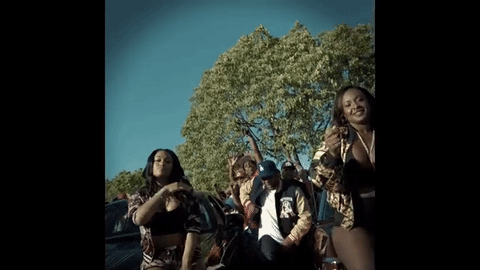
Camera Work
This wide angle track and dolly shot of the artist allows us to see other people that we assume are the artists friends dancing and enjoying the song, which makes the song seem to be more likeable as we see other people enjoying and believe we should also enjoy the song.
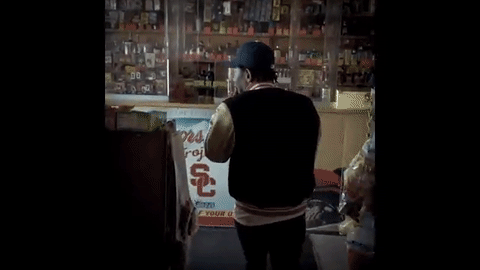
Camera Work
The low angle reveal of the 'Compton' sign forces us as an audience to look up to the sign, thus connoting the idea that 'Compton' is an admirable place. Looking up to the sunlight also gives an almost heavenly connotation of the city.
Camera Work
This low angle shot conforms to genric idea that masculinity must be portrayed in a hip-hop music video. The low angle forces the audience to look up to the artist and makes the artist seems as if the are powerful and someone to be idolised.

Camera Work
In this tracking shot we the audience follow the artist through the shop at eye level, thus making us feel more involved in the music video as we see the events from the same perspective as the artist does. This encourages us to actively participate in the song more.
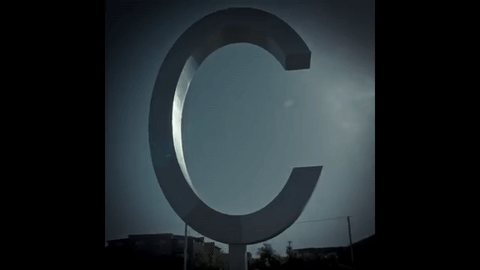
Costume and iconography
Summary
When it comes to describing the type of clothing that hip-hop artists wear, it is fair to say that first impressions are important, hence the bright jewelry often worn my males to assert their wealth and the revealing clothes worn by females to show that they are attractive. This iconography of 'skimpy' clothing for women conforms to Laura Mulvey's theory of the Male gaze and that women are objectified in modern culture and media, which is depressing considering hip-hop is one of the most popular genres across the world.
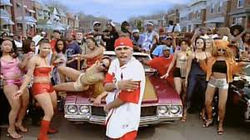 imgres-4Describe your image. |  images-1Describe your image. |  imagesDescribe your image. |
|---|---|---|
 imgres-1The Neighbourhood |  imgres-5Describe your image. |
Setting
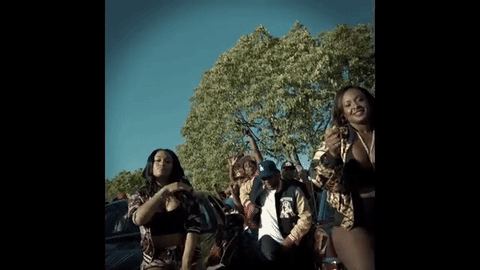
The relatively poor are shown in the video, Compton, contrasts the expensive clothes that the people in the video are wearing which suggests that that the artist is successful and very ambitious.
The relatively bland background only has trees and a blue sky which suggests that all the hard work is done now for the artist and there are 'nothing but blue skies ahead'. The blandness also forces us to focus on the artist, pushing home that artist image.
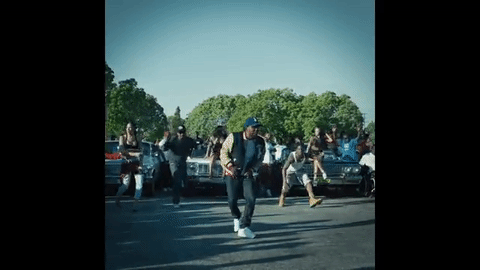
Relationship between lyrics and visuals
Upon the delivery of the line 'Annie are you ok?' the woman in the scene sings the lyrics and this acts as a intertextual reference to the popular musician Michael Jackson.

We constantly see references to the artists hometown, Compton, as the song is based around his home town and the success that he built from growing up there.


We hear the lyrics 'I don't want you monkey mouth motherfuckers sittin' in my throne again' as we see Kendrick Lamar sitting in a throne surrounded by his posse, this is a clear example of lyrics being illustrated by the visuals.

